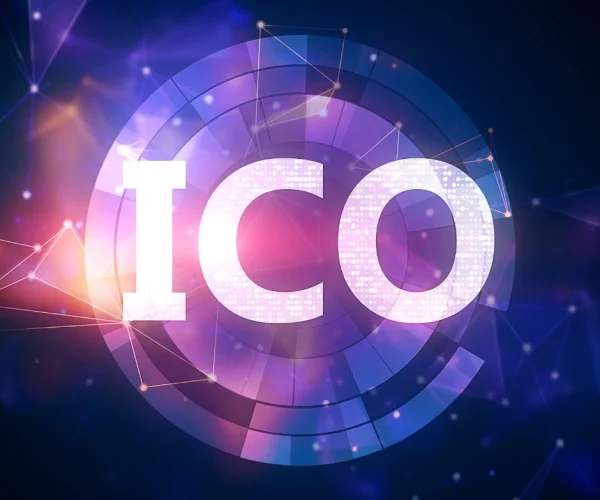Introduction
If you’re interested in cryptocurrency, chances are you’ve heard about ICO and IDO. These terms refer to fundraising methods that have gained popularity within the blockchain industry in recent years. But what exactly are they, and how do they work?
In this comprehensive guide, we’ll take a closer look at ICO and IDO in cryptocurrency. We’ll explore their differences, their significance in fundraising, and their potential impact on the market. Whether you’re a crypto enthusiast or a curious newcomer, this guide will provide you with the knowledge you need to navigate the ICO and IDO landscape.
Key Takeaways:
- ICO and IDO are fundraising methods used in the cryptocurrency industry.
- ICO stands for initial coin offering, while IDO stands for initial dex offering.
- ICO and IDO involve the sale of tokens to raise funds for blockchain-based projects.
- ICO and IDO have their advantages and risks, and it’s important to understand them before investing.
What is ICO in Cryptocurrency?
If you’re familiar with the world of cryptocurrency, you may have heard about ICOs (initial coin offerings) and their role in fundraising for blockchain-based projects. But what exactly is an ICO and how does it work?
An ICO is a method for companies and startups to raise funds by issuing and selling tokens to investors in exchange for cryptocurrency, typically Ether (ETH) or Bitcoin (BTC). These tokens can be thought of as digital assets that represent a stake in the project or platform being developed.
The process of an ICO typically involves creating a white paper that outlines the project’s goals, team, and token details, such as the total supply and distribution. Investors can then purchase these tokens during the ICO period, often through a smart contract on the Ethereum blockchain.
One of the main advantages of ICOs is that they provide a way for companies to raise funds from a global pool of investors, without the need for traditional financial intermediaries. However, ICOs also come with significant risks, such as the lack of regulatory oversight and the potential for scams and fraud.
Despite these risks, ICOs have become a popular way for blockchain startups to raise capital and build their platforms.
Token Sale and Decentralized Fundraising
The purpose of an ICO is to fund the development of a blockchain-based project or platform through the sale of tokens. These tokens can then be used within the platform’s ecosystem or traded on cryptocurrency exchanges.
The token sale is typically structured in tiers, with each tier offering a different level of benefits to investors, such as discounts on the token price or exclusive access to platform features. In some cases, the tokens may also have a utility value, such as granting access to a specific service or product.
Another key aspect of ICOs is their decentralized nature. Unlike traditional fundraising methods, which rely on centralized financial institutions, ICOs allow anyone with an internet connection to participate in the funding process.
This decentralized approach to fundraising has led to the emergence of new platforms and tools, such as cryptocurrency launchpads and decentralized exchanges (DEXs). These platforms provide a way for startups to launch their tokens and raise funds in a more secure and transparent manner.
Overall, ICOs have become a significant part of the cryptocurrency landscape, providing a new way for startups to fund their projects and for investors to get involved in the blockchain industry.

What is IDO in Cryptocurrency?
If you’re familiar with ICO, then you’re probably wondering what IDO is in cryptocurrency. An initial dex offering (IDO) is a decentralized way of raising funds for a cryptocurrency project through a launchpad that uses a decentralized exchange (DEX). IDOs have gained popularity in recent years due to the benefits they offer compared to traditional ICOs.
ICO and IDO differ significantly in their approach to fundraising. ICOs are centralized, meaning that a single entity or organization is responsible for issuing and managing the tokens. In contrast, IDOs operate on a decentralized platform that utilizes DEXs to facilitate the sale of tokens.
The use of a cryptocurrency launchpad is also a significant difference between ICO and IDO. Launchpads provide a platform for developers to launch their projects and sell tokens to the public. In an IDO, a launchpad is an essential component that connects the project with potential investors who can trade the project’s tokens on a DEX.

One significant advantage of IDOs is that they facilitate a fairer distribution of tokens compared to ICOs, which are notorious for their initial coin holders receiving a large share of the tokens. IDOs allow participants to acquire tokens at the same price, making it easier for small investors to participate and reduce the risk of price manipulation.
However, IDOs also carry risks that investors should be aware of. Due to their decentralized nature, there is a lack of regulatory oversight, which can lead to fraudulent projects and scams. Additionally, the potential market for IDOs might be limited as DEXs are not as widely used as centralized exchanges.
In summary, IDO in cryptocurrency is a decentralized fundraising method that primarily utilizes DEXs and cryptocurrency launchpads. It offers advantages such as fairer token distribution while carrying risks such as lack of regulatory oversight and limited market potential.
Fundraising in Cryptocurrency: ICO vs. IDO
When it comes to fundraising in cryptocurrency, both ICO and IDO have become popular methods of raising capital for blockchain-based projects. While both approaches share similarities, such as offering tokens to investors in exchange for capital, they differ in several key ways.
Firstly, an initial coin offering (ICO) involves a centralized fundraising process, where the project team develops and launches a proprietary blockchain and token. Investors contribute funds to the project in exchange for tokens, which they can later trade on various cryptocurrency exchanges.
In contrast, an initial dex offering (IDO) takes place on decentralized exchanges or launchpads. These platforms allow projects to launch their tokens directly to the public, without the need for intermediaries or centralized exchanges. Investors can purchase tokens with a variety of crypto assets, and the trading pairs are determined by the platform.
Another key difference is related to the regulatory environment surrounding ICOs and IDOs. ICOs have faced increased scrutiny from regulatory bodies, due to concerns regarding fraud and investor protection. In contrast, IDOs may provide a more attractive option for projects and investors, as they offer increased transparency, decentralization, and accessibility.
| ICO | IDO |
|---|---|
| Centralized fundraising | Decentralized fundraising |
| Project team develops and launches proprietary blockchain and token | Tokens launched directly on decentralized exchanges or launchpads |
| Regulatory challenges | Increased transparency, decentralization, and accessibility |
Despite the differences, both ICOs and IDOs have their advantages and disadvantages. ICOs may enable projects to raise larger amounts of capital, due to their centralized structure and wider reach. However, they also carry risks, such as regulatory uncertainty and the presence of fraudulent projects.
On the other hand, IDOs may provide increased accessibility and lower barriers to entry for investors, as they can purchase tokens with a variety of crypto assets on decentralized exchanges and launchpads. However, these platforms may also have limited liquidity and may not have the same level of investor protections as centralized exchanges.
Ultimately, the choice between ICO and IDO depends on various factors, such as the project’s goals, regulatory environment, and investor preferences. By understanding the similarities and differences between these two fundraising methods, you can make informed investment decisions in the crypto space.

Conclusion
Now that you have a comprehensive understanding of what ICO and IDO in cryptocurrency are all about, you are more equipped to navigate the world of blockchain-based projects and investments. ICO and IDO offer unique opportunities for decentralized fundraising, and each method has its own advantages and drawbacks. It’s essential to explore both options and evaluate them against your investment goals and risk appetite.
As the blockchain landscape continues to evolve, ICO and IDO will play an increasingly significant role in funding innovative projects. Keeping up with the latest trends and regulations in the industry will help you make informed decisions and maximize your investment potential. So, go ahead and experiment with different strategies, and don’t be afraid to venture into the exciting world of cryptocurrency fundraising.
FAQ
Q: What is an ICO in cryptocurrency?
A: An ICO, or initial coin offering, is a fundraising method used by blockchain-based projects to raise capital. It involves the sale of a new cryptocurrency token to investors in exchange for established cryptocurrencies, such as Bitcoin or Ethereum.
Q: How does an ICO work?
A: During an ICO, project developers create and issue a limited supply of tokens that represent a stake in their project. These tokens are then sold to investors at a predetermined price, usually in exchange for established cryptocurrencies. The funds raised through the ICO are used to fund the development of the project.
Q: What are the advantages of participating in an ICO?
A: Participating in an ICO can provide early access to potentially profitable investment opportunities. It allows investors to support promising projects in their early stages and potentially benefit from the future success of the project.
Q: What are the risks associated with ICOs?
A: ICOs carry certain risks, including the potential for scams or fraudulent projects. Investors must conduct thorough research before participating in an ICO to ensure the project is legitimate and has a solid foundation. Additionally, the value of ICO tokens can be volatile, and there is no guarantee of future returns.
Q: What is an IDO in cryptocurrency?
A: An IDO, or initial dex offering, is a fundraising method that takes place on decentralized exchanges and launchpads. It allows projects to raise capital by offering their tokens directly to the public, bypassing traditional centralized exchanges.
Q: How does an IDO differ from an ICO?
A: The main difference between an IDO and an ICO is the platform on which they occur. While ICOs often take place on centralized platforms, IDOs occur on decentralized exchanges and launchpads. This decentralized nature gives IDOs certain advantages, such as increased accessibility, transparency, and liquidity.
Q: What are the benefits of participating in an IDO?
A: Participating in an IDO allows investors to access new tokens early on, often at lower prices compared to centralized exchanges. It also provides a level playing field for all participants and enhances decentralization within the crypto ecosystem.
Q: Are there any drawbacks to IDOs?
A: IDOs can have high demand and limited supply, making it challenging for all investors to secure tokens. Additionally, the decentralized nature of IDOs can make it harder to regulate and protect investors from potential scams or fraudulent projects.
Q: How do ICOs and IDOs differ in terms of fundraising?
A: ICOs and IDOs both serve as fundraising methods within the cryptocurrency space. However, ICOs primarily rely on established cryptocurrencies as the means of investment, while IDOs utilize decentralized exchanges and launchpads for direct token sales. The mechanisms and processes involved can vary, but both aim to raise capital for blockchain-based projects.
Q: What is the importance of understanding ICO and IDO in cryptocurrency?
A: Understanding ICO and IDO in cryptocurrency is crucial for investors and individuals interested in the blockchain industry. It enables informed investment decisions, promotes responsible participation in fundraising events, and contributes to the overall growth and development of the crypto ecosystem.
